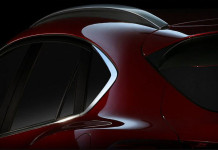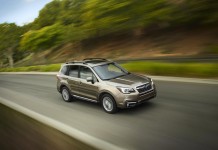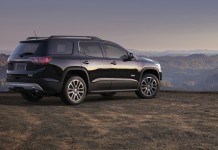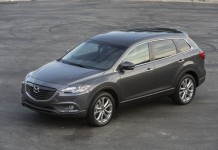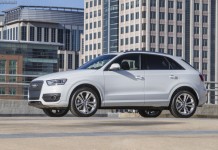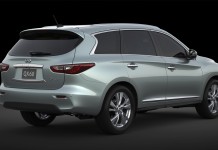When most people put the words compact, agile, turbocharged and inexpensive together, the image of a budget sports car gets envisioned in their mind. These adjectives have been stamped on such icons as the MazdaSpeed Miata, Subaru WRX, Dodge SRT4 and the Nissan Silvia. Sadly, due to unforseen reasons, some icons have been put off to pasture thus leaving a void to be filled by a low-cost but boosted vehicle. In 2002, Nissan did the unthinkable and ended production of the rear wheel drive Silvia and replaced it with an empty parking spot. Enthusiasts around the world, including the nations that couldn’t even get the last generation car, were devastated but knew that Nissan wouldn’t leave them hanging for too long. When the 2011 model year came around, it brought with it a compact, agile, turbocharged and inexpensive Nissan named the Juke but there was a catch. With no intention of taking a defunct icon’s place, the latest turbocharged budget pocket rocket from the Japanese brand isn’t actually a sports car but an odd-looking crossover. The Juke may not look it, but it has enough in its bag of tricks to impress more than just one skeptic.

Released for the 2011 model year, the Juke made it to the United States as Nissan’s smallest crossover. Placed under the Rogue and riding on the B Platform, the Juke shares many of its underpinnings with the similarly sized Cube and Versa. With that platform comes a 99.6 inch wheelbase, 162.4 inch length and 69.5 inch width. Given that it is categorized as a crossover, the Juke rolls around with 7 inches of ground clearance under its body; more than the Cube and Versa. That also means that unlike the two “cars”, the “SUV” gets to have the option of all wheel drive. When power is sent to rear wheels, two electronically controlled wet clutch packs distribute torque to the left and right wheels for optimal turning power. To accompany the all wheel drive, the B Platform’s base torsion beam rear suspension is ditched in favor a multi-link set up. If four drive wheels are not needed, front wheel drive Jukes are offered at a lower price but lose the high-tech independent rear for the simple torsion beam. It may be disappointing, but the two wheel drive cars get a special parting favor not found on all wheel drive cars: a six speed manual transmission that is hooked up to Nissan’s first U.S. turbocharged four cylinder in ages.


To find out where the Juke falls in between versatile and enthusiastic, we tested a 2011 front wheel drive SV model. With a base price of $21,310, the SV trim is the middle ground car and comes with standard features such as a power moon roof, Integrated Control (I-Con) system, bluetooth phone pairing, XM Satellite radio, speed-sensitive volume control and push button start. Added to our Cayenne Red tester was the $500 continuously variable transmission (CVT) and $800 navigation system with Rockford Fosgate supplied subwoofer to bring the final MSRP to $23,390 with destination charge. That is a very fair sum considering the Juke’s powertrain, standard features and low-cost options. Under a grand for a navigation system is excellent, especially in today’s world.





In all honesty, Nissan would have shocked no one if the simple 122 horsepower, 1.8 liter Cube four cylinder was found under the Juke’s short hood. Instead, an all-new turbocharged block know as the MR16DDT was installed which immediately grabbed the attention of Nissan enthusiast everywhere. A smaller displacement version of the 2.0 liter found in the Sentra, the 1.6 liter double overhead cam mill uses direct injection, dual variable valve timing and a single turbocharger. Currently, it is only found in America under the hood of the Juke and produces a stout 188 horsepower and 177 lb-ft of torque. This allows the under 3,000 lbs front drive CVT Nissan to hit 60 mph from a standstill in the low seven second range. An even faster time could be had out of a front drive six speed manual model as well as more fun, but the CVT does a fine job of holding boost. When hard acceleration is needed, the “automatic” jumps the engine to its optimal rpm depending on how close a driver’s right foot gets to the firewall. If placed in sport mode, a driver can “shift” the Juke by manipulating the CVT’s tension pulleys to simulate gear changes. It may work better than other CVT offerings and produce higher city fuel economy than the manual (27 mpg compared to 24), but three pedals and a shifter suit the Juke’s personality much better. Even still, the little 1.6 is a true gem as throttle response is dead-on and turbo-lag is non-existent. If untold, a first time Juke driver could easily belive the MR to be a larger, naturally aspirated hot-rod four cylinder due to the way it builds power.

Straight line fun is one thing, but any sporting vehicle must be a hoot in the twisties if it ever wants to stick around. Despite its old-tech torsion beam rear suspension, our front drive tester still made the best of things. The steering is weighted just right to offer excellent feed back and fast inputs while the short wheelbase makes hitting apex after apex feel crisp and easy. Powering out of corners isn’t as tricky as one might thing given the amount of power being put down to the front wheels and torque steer isn’t really an issue. With traction control off, the front wheels will spin out of lower speed corners which is a laugh, but could get expensive. Not the ultimate track star, but the Juke makes up for its crossover moves by being something more important than 0n-paper fast: entertaining.

With enough hustle to blast up a clover-leaf and the proper moves to grab a mountain road’s apex, the Juke has the right amount of scoot that it could run head-to-head with more than a few hot hatchbacks. Still, Nissan bills the car as a crossover so it must do crossover things such as haul. With the split folding rear seats down, there is a total 35.9 cubic feet of cargo space to play with. Decent enough to haul a mountain bike or hiking gear, the space inside the cabin is ever-so-slightly larger than a Scion xD but smaller than the Kia Soul. More space could be had if it wasn’t for the Juke’s obviously unique styling that cuts the rear hatch before the end of the bumper. In profile view, the Nissan’s “trunk” area is almost as long as its hood and just as bulbous. Looking like absolutely nothing else on the road, the Juke is the definition of “love it or hate it.” With a frog-like face, gargantuan fog lamps, bulging fenders and cut rear tail lights, the car is very “in-your-face” and clearly proud about it. Nissan is taking a big gamble with the Juke’s looks as this isn’t the type of car that you warm up to and thus, it could easily turn buyers away solely on that.





To be perfectly honest, the Juke raises some serious questions and concerns. The fact that its outward appearance is so rambunctious is proof that Nissan isn’t afraid to break away from its usually conservative brand image. Why they made the decision to go with these kind of aesthetics might be a mystery but it could work out in their favor. Scion hit a home run with its first run xB which is generally regarded as being ugly. The Juke’s powertrain is impressive but so much so that its placement seems a bit strange. The MR16DDT packs an excellent amount of power in a compact package and would make a fantastic engine in something compact, light and rear wheel drive. Why Nissan put this boosted block in a tall crossover instead of a new generation 240sx is another question left unanswered. Then there is the Juke’s platform layout which seems as if there is a tasty cupcake placed just a bit to high on the shelf. The sharper independent rear suspension is only found on the all wheel drive car which isn’t offered with the better-suited six speed manual transmission. When this is realized, better Juke combos can be imagined such as a two wheel drive with no torsion beam or a six speed manual with all wheel drive. Alas, these cars don’t exist just yet but if Nissan was smart, they would show their face sometime soon. With dreaming aside, the Jukes that we are offered are still plenty capable. They’re low-cost, quick, useful, smart and most importantly, they’re fun. The potential for faster times is also there as tuners around the world are finding out that more power can be had out of the turbocharged 1.6 with simple bolt-on modifications. With that in mind, the 2011 Nissan Juke could be considered a hot hatch as it is an inexpensive way to do a lot of things and do them with a smile.
Photos: © Copyright 2011 Ossamah Shabbir


